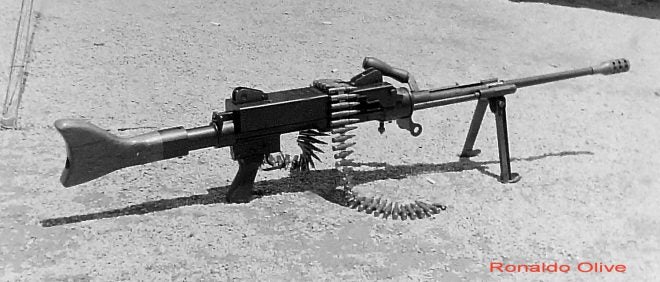The word Uirapuru is the name of both an actual Amazonian bird and a mythical creature. In the rain forest, the bird Uirapuru sings once a year when it builds its nest. Even then, only from five to ten minutes early in the morning. According to the legend, Uirapuru’s song is so beautiful that all other birds stop singing to listen to it. Yet in another version of the legend, a human being is transformed after his death into the enchanted Uirapuru, breathing new life into the silent forest. Both in legend and reality, Uirapuru is a symbol of rarefied beauty. Well, so much for ornitology and fantasy…
It’s no small coincidence, then, that this strange name was chosen for a promising 7.62x51mm General Purpose Machine Gun (GPMG) project that emerged in Brazil in the 1970s but that was to remain virtually obscure since then. The whole thing started life as a pure research project at the Brazilian Army IME – Instituto Militar de Engenharia (Military Engineering Institute) in Rio de Janeiro in November, 1969. A task-group consisting of Colonel Alcides Guerreiro Brito, Olympio Vieira de Mello Filho and Nelmo Suzano was able to build three prototypes of a gas-operated machine gun chambered to 7.62x51mm, which received the name Maria Bonita, strangely enough, the nickname of a female member of a band of “Cangaceiros”, a bunch of marauders who terrorized the Brazilian Northeast in the 1920s and 1930s! The weapon worked satisfactorily, but the lack of any previous design experience in this field by the Brazilian technicians led to a number of inherent malfunctions. The principal one was the constant drop in the rate of fire after about 300 rounds had been fired, plus extraction/ejection incidents, insufficient percussion, etc.
It then became clear that only a careful, pure-research program with no strict deadlines could produce a reliable gun of 100 per cent indigenous design. As more urgent IME programs were already under way, the GPMG activities were all but fully stopped. Some time later, the Army placed the gun in the hands of designer Olympio Vieira de Mello Filho, one of the members of the original task-group, who set up to solve the problems on his own. In 1976, he came up with a substantially modified weapon that worked very well indeed. Demonstrated to the military, it showed good potential for large-scale production and adoption, and the interest in the gun shifted from the study-oriented IME to the IPD – Instituto de Pesquisa e Desenvolvimento (Research and Development Institute), more dedicated to turning projects into commercially-feasible ideas.
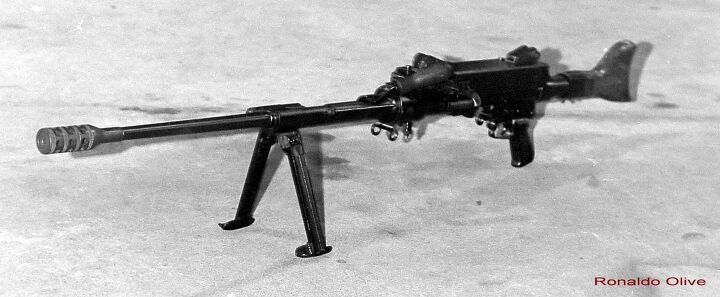
In December, 1977, the IPD granted Mekanika Indústria e Comércio Ltda, a Rio de Janeiro-based company that was about to start series manufacture of the 9x19mm Uru submachine gun, a contract to built two prototypes for official testing and evaluation purposes, the GPMG then receiving the name Uirapuru. Although briefly and not-fully tested at the Army’s Campo de Provas da Marambaia (Marambaia Proving Grounds) in Rio de Janeiro, with reported exceptional results, the weapon somehow did not progress much further. This has been attributed to the fact that the Belgian FN MAG had already been officially adopted and supplied in large scale to the Brazilian Army as the “Metralhadora 7.62 MAG”, plus the guys in charge at that time not envisaging the advantages of investing in such a program. The mechanical, rapid-firing Uirapuru sang for a brief period, only, and silence fell on the rain forest…
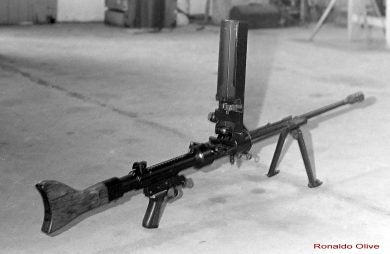
The Uirapuru was, indeed, expected to become a true GPMG, filling a variety of roles, such as light machine gun (with butt stock and foldable bipod), medium machine gun (no stock, tripod-mounted), tank coaxial machine gun, aircraft machine gun (with a solenoid trigger), armored vehicle machine gun (firing from a pedestal), etc. It was a gas-operated (no regulator fitted), full-auto job using a dropping locking lever and with a cyclic rate of fire of 650-700 rounds per minute. The slim, 600mm barrel (6 grooves, RH, 1:305mm, muzzle velocity 850 m/s) could be quickly (30 seconds or so) changed with the help of its slanted, integral carrying handle, this being recommended after the continuous firing of about 400 rounds. A flash hider/compensator was fitted. The two-position (safe-automatic) selector was a disc fitted on the left side, just above the pistol grip which came straight from a Uru SMG! As completed by Mekanika, the machine gun had an overall length of 1300mm and weighed 13kg with the wooden butt and foldable bipod. The ramp-protected sights had a pretty short (320mm) radius and were mounted on the rectangular body.
At a time, it was reported that one Uirapuru prototype had been fitted with a shorter barrel, but the author never actually saw it. The sole remaining gun now rests in a showcase at Brazilian Army’s Museu Militar Conde de Linhares, in Rio de Janeiro.
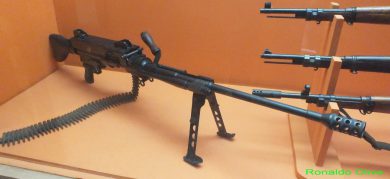
A surviving Mekanika Uirapuru GPMG is on display at Brazilian Army’s Museu Militar Conde de Linhares, in Rio de Janeiro… with an upside down stock!
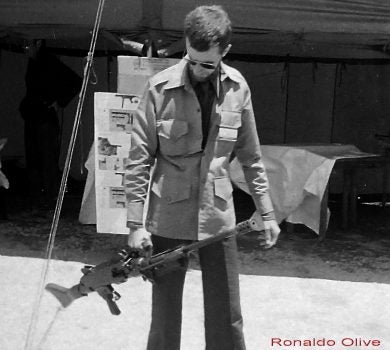
The author and the Uirapuru in a Brazilian Army exhibition in São Paulo, November, 1979. The slanted carrying handle led to a tilted carrying position.
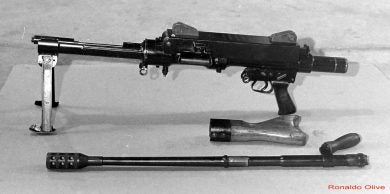
Prototype with barrel and butt stock removed.
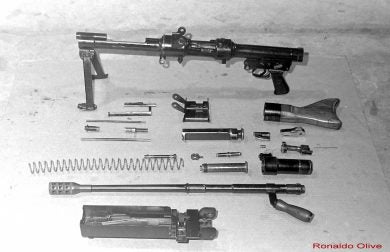
Stripped down to its basic components, the Uirapuru shows its pretty simple design.
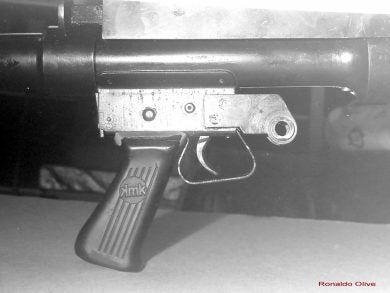
This close-up view shows the trigger area and the plastic pistol grip that came from a 9x19mm Uru submachine gun, also manufatured by Mekanika Indústria e Comércio Ltda (see logo).
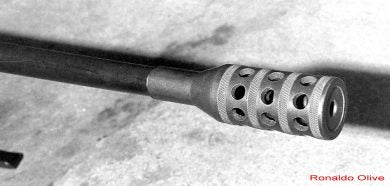
The characteristic barrel attachment which doubled as a flash hider and muzzle brake.
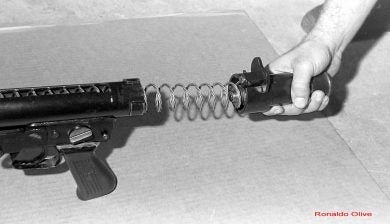
Removing the tubular receiver’s rear end cap to allow the large diameter recoil spring to be pulled out.
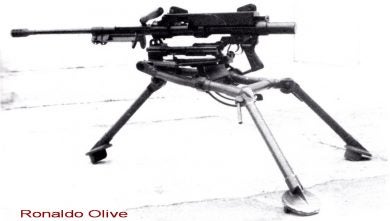
The gun, minus butt stock and with bipod folded, on a medium machine gun tripod mount.
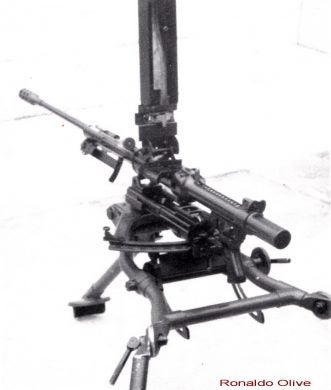
With the feed cover open, the Uirapuru displays its tubular configuration.
 Your Privacy Choices
Your Privacy Choices
